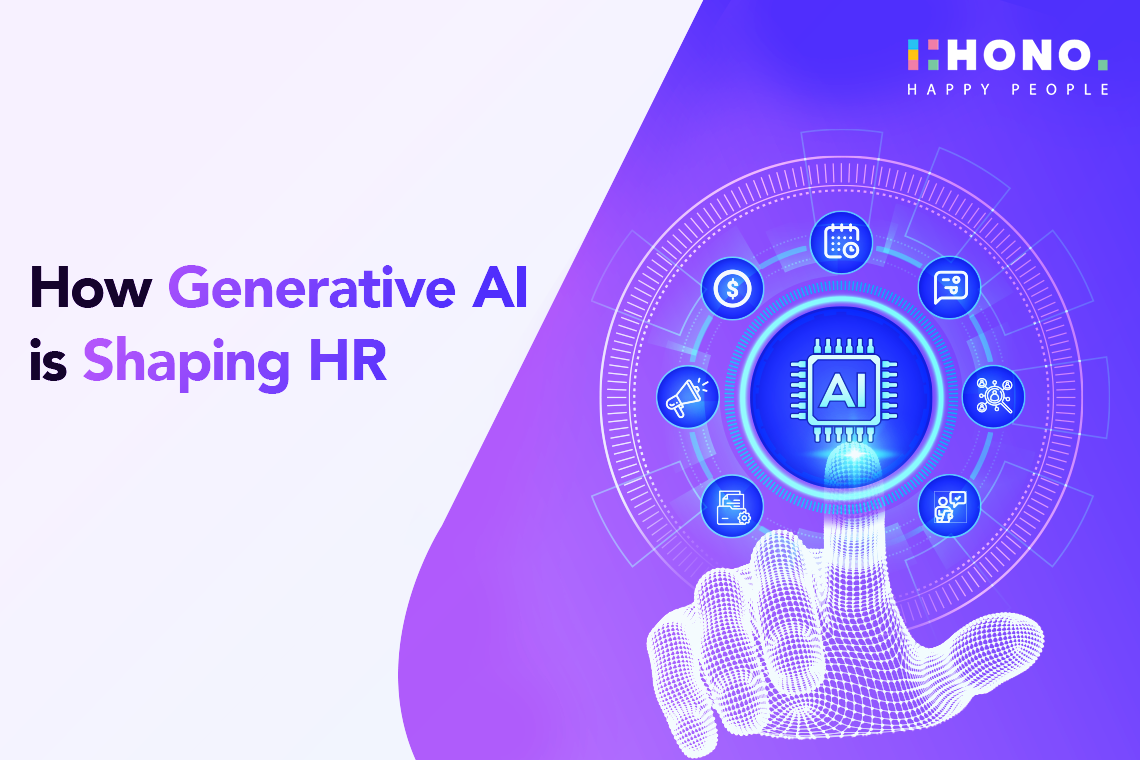Creating a positive workplace environment is essential for the success and growth of any organization. A supportive and engaging work atmosphere not only boosts employee morale but also enhances productivity and retention. In today's data-driven world, HR analytics has emerged as a powerful tool to understand and improve the workplace.
HR Analytics | The Key to Creating a Workplace People Love
6 mins

HR analytics, also known as people analytics, involves the use of data and statistical methods to analyze employee behavior and trends. It plays a pivotal role in various HR functions, including talent management, employee engagement, and workforce planning. By leveraging HR analytics, organizations can make informed decisions that lead to a more satisfied and motivated workforce.
Also Read: How HR Workforce Analytics Software Can Help You Improve Your Workforce Planning
What Is Employee Satisfaction?
HR analytics plays a crucial role in measuring and analyzing employee satisfaction. By leveraging HR data analytics, organizations can gain insights into various factors that influence employee contentment, such as work environment, management practices, and job roles. Surveys and feedback mechanisms are commonly used tools in this process, providing valuable data that can be analyzed to identify trends and areas for improvement. The importance of HR analytics in this context lies in its ability to provide a data-driven approach to understanding what drives employee satisfaction and how it can be enhanced.
Furthermore, HR analytics enables organizations to segment employee satisfaction data based on demographics, departments, or other relevant criteria. This segmentation helps in pinpointing specific issues that may be affecting certain groups and allows for targeted interventions. By understanding the key drivers of satisfaction, companies can implement changes that lead to a happier and more engaged workforce, ultimately contributing to the overall success of the organization.
Enhancing Employee Engagement
HR analytics is instrumental in monitoring and boosting employee engagement levels. By analyzing engagement metrics such as participation in company initiatives, feedback scores, and employee net promoter scores (eNPS), organizations can identify patterns and areas for improvement. The benefits of HR analytics in this area include the ability to track the effectiveness of engagement programs and initiatives over time, providing a clear picture of what works and what doesn't.
Using these insights, companies can design and implement strategies that build a more engaging workplace. For example, if data reveals that employees feel disconnected from the company's mission, leadership can take steps to communicate the mission more effectively and involve employees in goal-setting processes. By continuously monitoring engagement levels and adapting strategies accordingly, organizations can create a work environment that motivates and inspires employees to perform at their best.
Optimizing Talent Management
HR analytics aids in optimizing talent management processes, encompassing talent acquisition, development, and retention. By analyzing data related to recruitment, performance, and turnover, organizations can make informed decisions about hiring, training, and retaining employees. The evolution of HR analytics has enabled a more strategic approach to talent management, allowing companies to align their talent strategies with business objectives.
Related: Impact of AI on Talent Management: Streamlining Recruitment Processes
For instance, analytics can help identify the most effective recruitment channels, predict which candidates are likely to succeed in a role, and determine the key factors that influence employee retention. This data-driven approach ensures that organizations invest in the right talent and provide them with opportunities for growth and development, leading to a more skilled and committed workforce.
Improving Workplace Diversity and Inclusion
HR analytics is a valuable tool for tracking diversity metrics and identifying gaps in inclusion efforts. By analyzing data related to employee demographics, recruitment, and promotion rates, organizations can assess the effectiveness of their diversity and inclusion initiatives. This analysis can reveal areas where certain groups may be underrepresented or facing barriers to advancement.
With these insights, companies can develop targeted strategies to address disparities and build a more inclusive workplace. For example, if data shows a lack of diversity in leadership positions, the organization can implement mentorship programs or unconscious bias training to support the development of underrepresented employees. By leveraging HR analytics, organizations can create a more diverse and inclusive environment that values and respects the unique contributions of all employees.
Predicting and Preventing Employee Turnover
Predictive HR analytics helps identify turnover risks by analyzing employee satisfaction, performance, and engagement data.
Organizations can proactively address issues before they lead to employee departures.
Analytics can pinpoint employees or departments with higher turnover likelihood.
HR can investigate causes and implement targeted retention strategies.
Predictive models reduce turnover rates and retain valuable talent.
This approach saves costs associated with recruitment and training.
Enhancing Work-Life Balance
HR analytics can also play a significant role in enhancing work-life balance for employees. By analyzing data related to working hours, workload, and employee feedback, organizations can identify areas where work-life balance may be lacking. This information can inform the development of policies and initiatives that promote a healthier balance, such as flexible working arrangements, wellness programs, and time-off policies.
The importance of work-life balance for employee satisfaction and productivity cannot be overstated. A healthy balance between work and personal life contributes to employee well-being, reduces stress, and increases engagement. By leveraging HR analytics, organizations can create a supportive environment that values the well-being of its employees and builds a more productive and satisfied workforce.
HR analytics plays an important role in creating a workplace that employees love. By leveraging data and insights, organizations can understand employee satisfaction, enhance engagement, optimize talent management, improve diversity and inclusion, predict turnover, and promote work-life balance. These efforts lead to a more positive and productive work environment.
Embracing HR analytics is not just a strategic decision but a commitment to continuous improvement and employee well-being. As we move forward, the power of HR analytics will only continue to grow, offering even more opportunities to create workplaces where people feel valued, supported, and inspired.
Request A Demo!
Frequently Asked Questions
HCM software automates and streamlines HR processes, making them more efficient and accurate. It provides a centralized platform for managing employee data, tracking performance, facilitating talent acquisition, and improving employee engagement. By leveraging HR management software, organizations can save time, reduce administrative burdens, make data-driven decisions, and enhance overall HR operations.
AI-driven HONO is considered the best HR software due to its innovative use of Artificial Intelligence (AI) to streamline and enhance HR processes. Here’s why. It provides actionable, data-driven insights that enable HR professionals to make informed decisions, improving overall organizational effectiveness and strategic planning. HONO automates repetitive and time-consuming HR tasks, allowing HR personnel to focus on more strategic activities, thereby increasing overall productivity and efficiency. HONO is scalable and adaptable, catering to the evolving needs of organizations, regardless of their size or industry.
Choosing the right Employee Management Software involves considering several factors to ensure it meets the organization’s needs. Here’s a guide to help you choose. Clearly define what you need the HRMS software to achieve, considering aspects like attendance tracking, performance management, and employee development. Determine a budget considering both the initial cost and ongoing expenses like subscription fees, updates, and support. Ensure the HCM software integrates seamlessly with other systems and tools used in your organization, such as payroll and attendance systems. Opt for cloud HCM with an intuitive and user-friendly interface to ensure ease of use for both HR personnel and employees. Assess the human capital management solution's security features and its ability to comply with relevant laws and regulations to protect sensitive employee data. By considering the above factors and conducting thorough research, you can select an Employee Management Software that aligns with your organizational goals and enhances overall workforce management.
.png?width=70&height=70&name=Team%20HONO%20logo-01%20(1).png)
Team HONO








.jpg)
